- Home
- David McCullough
The American Spirit
The American Spirit Read online
Thank you for downloading this Simon & Schuster ebook.
* * *
Get a FREE ebook when you join our mailing list. Plus, get updates on new releases, deals, recommended reads, and more from Simon & Schuster. Click below to sign up and see terms and conditions.
CLICK HERE TO SIGN UP
Already a subscriber? Provide your email again so we can register this ebook and send you more of what you like to read. You will continue to receive exclusive offers in your inbox.
Contents
Epigraph
Introduction
Simon Willard’s Clock
Civilization and the City
The Spirit of Jefferson
Which Way Forward
The Animating Spirit
The Lessons of History
What’s Essential Is Invisible
The First to Reside Here
History Lost and Found
The Bulwark of Freedom
Knowing Who We Are
The Ties That Bind
The Love of Learning
The Summons to Serve
A Building Like No Other
Acknowledgments
About the Author
Photo Credits
For Our Grandchildren
Caitlin
Jed
Tyler
David
Leah
Ethan
Jesse
Caroline
William
Melissa
Geoffrey
Nellie
Louisa
Henry
Rosie
Nathaniel
Tamaelle
Luke
May
“Perseverance and spirit have done wonders in all ages.”
—GEORGE WASHINGTON
Introduction
History, I like to think, is a larger way of looking at life. It is a source of strength, of inspiration. It is about who we are and what we stand for and is essential to our understanding of what our own role should be in our time. History, as can’t be said too often, is human. It is about people, and they speak to us across the years.
Our history, our American story, is our definition as a people and a nation. It is a story like no other, our greatest natural resource, one might say, and it has been my purpose in my work to bring that story and its protagonists into clearer, more human focus in what I have written and in speeches I have made.
The speeches included here have been selected from a great many given over the past twenty-five years with the hope that what I have had to say will help remind us, in this time of uncertainty and contention, of just who we are and what we stand for, of the high aspirations that inspired our founders, of our enduring values, and the importance of history as an aid to navigation in such troubled, uncertain times.
Two of the speeches were delivered at celebrations of national anniversaries—the Bicentennial of the United States Congress and the Bicentennial of the White House. Two others were given on historic ground and at ceremonies honoring two eminently memorable American experiences, one of high hopes, the other of tragic loss and words of everlasting value.
The first was a summer naturalization ceremony at Thomas Jefferson’s Monticello. The second, a memorial service marking the fiftieth anniversary of the assassination of John F. Kennedy, took place at midday, November 22, 2013, at Dealey Plaza in Dallas, Texas. More than five thousand people had gathered, many having traveled far to be there. The day was miserable—cold, wet, and windy—and the crowd had been gathered since early morning. The Naval Academy Glee Club sang “The Battle Hymn of the Republic.” The scene from the speaker’s platform was one I will never forget.
University and college campuses have been the setting for a number of the other speeches included, and at those occasions I hoped to make clear to the young men and women about to step in to full participation in American life the vital importance of knowing their country’s history, but also that history, like music, like poetry, like art, is a wonderful way to enlarge the experience of being alive—and that history is not about politics and war only, not by any means, and for the reason that music and poetry and art are very much a part of history, a point of particular emphasis in the talk I gave at Lafayette College in 2007.
I have no idea how many speeches I’ve given, starting at least fifty years ago, but I do know I have spoken in all fifty states and I am still at it, primarily because I feel I have something to say and because I always enjoy seeing our country and meeting people and listening to what they have to say.
Yes, we have much to be seriously concerned about, much that needs to be corrected, improved, or dispensed with. But the vitality and creative energy, the fundamental decency, the tolerance and insistence on truth, and the good-heartedness of the American people are there still plainly.
Many a time I have gone off on a speaking date feeling a bit down about the state of things and returned with my outlook greatly restored, having seen, again and again, long-standing American values still firmly in place, good people involved in joint efforts to accomplish changes for the better, the American spirit still at work.
Simon Willard’s Clock
JOINT SESSION OF CONGRESS
Washington, D.C.
1989
Mr. Speaker, Mr. Vice President, Senator Dole, Members of the 101st Congress, ladies and gentlemen. For a private citizen to be asked to speak before Congress is a rare and very high honor and I thank you.
Simon Willard was never a Member of Congress in the usual sense. Simon Willard of Roxbury, Massachusetts, was a clockmaker early in the nineteenth century and he did it all by hand and by eye.
“In cutting his wheel teeth,” reads an old account, “he did not mark out the spaces on the blank [brass] wheel and cut the teeth to measure, but he cut, rounded up and finished the teeth as he went along, using his eye only in spacing, and always came out even. . . .
David McCullough addressing Congress
“It is doubtful,” the old account continues, “if such a feat in mechanics was ever done before, and certainly never since.”
The exact date is uncertain, but about 1837, when he was in his eighties, Simon Willard made a most important clock. I will come back to that.
On a June afternoon in 1775, before there was a Congress of the United States, a small boy stood with his mother on a distant knoll, watching the battle of Bunker Hill. The boy was John Quincy Adams, diplomat, senator, secretary of state, and president, who in his lifetime had seen more, contributed more to the history of his time than almost anyone and who, as no former president ever had, returned here to the Hill to take a seat in the House of Representatives, in the 22nd Congress, and thrilled at the prospect. And it was here that this extraordinary American had perhaps his finest hours.
Adams took his seat in the old House—in what is now Statuary Hall—in 1831. Small, fragile, fearing no one, he spoke his mind and his conscience. He championed mechanical “improvements” and scientific inquiry. To no one else in Congress are we so indebted for the establishment of the Smithsonian Institution. With Congressman Abraham Lincoln of Illinois and Thomas Corwin of Ohio, he cried out against the Mexican War, and for eight long years, almost alone, he battled the infamous Gag Rule imposed by southerners to prevent any discussion of petitions against slavery. Adams hated slavery, but was fighting, he said, more for the unlimited right of all citizens to have their petitions heard, whatever their cause. It was a gallant fight and he won. The Gag Rule was permanently removed.
The House of Representatives by Samuel F. B. Morse
Earlier this year, at the time of the inaugural ceremonies of George Herbert Walker Bush, I heard a television commentator broadca
sting from Statuary Hall complain of the resonance and echoes in the room. What resonance! What echoes!
John Quincy Adams is a reminder that giants come in all shapes and sizes and that, at times, they have walked these halls, their voices have been heard, their spirit felt here. Listen, please, to this from his diary, from March 29, 1841:
The world, the flesh, and all the devils in hell are arrayed against any man who now in this North American Union shall dare to join the standard of Almighty God to put down the African slave trade, and what can I, upon the verge of my seventy-fourth birthday, with a shaking hand, a darkening eye, a drowsy brain, and with all my faculties dropping from me one by one, as the teeth are dropping from my head—what can I do for the cause of God and man. . . .
And how he loved the House of Representatives:
The forms and proceedings of the House [he writes], this call of the State for petitions, the colossal emblem of the Union over the Speaker’s chair, this historic Muse at the clock, the echoing pillars of the hall, the tripping Mercuries who bear the resolutions and amendments between the members and the chair, the calls of ayes and noes, with the different intonations of the answers, from different voices, the gobbling manner of the clerk in reading over the names, the tone of the Speaker in announcing the vote, and the varied shades of pleasure and pain in the countenances of the members on hearing it, would form a fine subject for a descriptive poem.
Some nights he returned to his lodgings so exhausted he could barely crawl up the stairs. In the winter of 1848, at age eighty, after seventeen years in Congress, Adams collapsed at his desk. A brass plate in the floor of Statuary Hall marks the place.
He was carried to the speaker’s office and there, two days later, he died. At the end Henry Clay in tears was holding his hand. Congressman Lincoln helped with the funeral arrangements. Daniel Webster wrote the inscription for the casket.
Many splendid books have been written about Congress: Harry McPherson’s A Political Education, Allen Drury’s A Senate Journal, Alvin Josephy’s On the Hill and Kings of the Hill, by Representative Richard Cheney and Lynne V. Cheney, Rayburn, a fine recent biography by D. B. Hardeman and Donald Bacon, and The Great Triumvirate, about Clay, Webster, and Calhoun, by Merrill Peterson. Now, in the bicentennial year, comes volume one of Senator Robert Byrd’s monumental history of the Senate.
But a book that does justice to the story of Adams’s years in the House, one of the vivid chapters in our political history, is still waiting to be written as are so many others.
Our knowledge, our appreciation, of the history of Congress and those who have made history here are curiously, regrettably deficient. The plain truth is historians and biographers have largely neglected the subject. Two hundred years after the creation of Congress, we have only begun to tell the story of Congress—which, of course, means the opportunity for those who write and who teach could not be greater.
There are no substantial, up-to-date biographies of Justin Morrill of Vermont, author of the Land Grant College Act; or Jimmy Byrnes, considered the most skillful politician of his day; or Joe Robinson, the most tenacious Democratic majority leader, whose sudden death in an apartment not far from here meant defeat for Franklin Roosevelt’s court-packing scheme; or Carl Hayden of Arizona, who served longer in the Senate than anybody, forty-one years.
We have John Garraty’s life of Henry Cabot Lodge, Sr., but none of Henry Cabot Lodge, Jr. Search the library shelves for a good biography of Alben Barkley or Speaker Joe Martin and you won’t find one. They don’t exist. The only biography of Senator Arthur Vandenberg ends in 1945, when his career was just taking off.
The twentieth-century senator who has been written about most is Joe McCarthy. There are a dozen books about McCarthy. Yet there is no biography of the senator who had the backbone to stand up to him first—Margaret Chase Smith.
Margaret Chase Smith
“I speak as a Republican,” she said on that memorable day in the Senate. “I speak as a woman. I speak as a United States Senator. I speak as an American. I don’t want to see the Republican Party ride to political victory on the four horsemen of calumny—fear, ignorance, bigotry and smear.”
We have books on people like Theodore Bilbo and Huey Long, but no real biographies of George Aiken or Frank Church.
Richard Russell of Georgia, one of the most highly regarded, influential figures to serve in the Senate in this century, used to take home old bound copies of the Congressional Record to read in the evenings for pleasure. He loved the extended debates and orations of older times and would remark to his staff how strange it made him feel to realize that those who had once counted for so much and so affected the course of American life were entirely forgotten.
You wonder how many who pour in and out of the Russell Building each day, or the Cannon Building, have any notion who Richard Russell was? Or Joseph Gurney Cannon? There is no adequate biography of either man.
As Speaker of the House and head of the Rules Committee, Uncle Joe Cannon, of Danville, Illinois, once wielded power here of a kind unimaginable today. He was tough, shrewd, profane, picturesque, and a terrible stumbling block. It was the new twentieth century. The country wanted change, reform. Uncle Joe did not. “Everything is all right out west and around Danville,” he would say. “The country don’t need any legislation.”
When a bill came up to add a new function to the U.S. Commission of Fish and Fisheries, making it the U.S. Commission of Fish and Fisheries and Birds, Cannon protested. He didn’t like adding “and Birds” . . . “and Birds” was new and different and therefore unacceptable.
The insurrection that ended Cannon’s iron rule, a revolt here in this chamber in 1910, was led by George Norris, of Red Willow County, Nebraska. There have been few better men in public life than George Norris and few more important turning points in our political history. Yet today it is hardly known.
How much more we need to know about the 1st Congress when everything was new and untried.
How much we could learn from a history of the Foreign Relations Committee.
Imagine the book that could be written about the Senate in the momentous years of the New Deal. Think of the changes brought about then. Think of who was in the Senate—Robert Wagner, Burton K. Wheeler, Hugo Black, Claude Pepper, Barkley, Huey Long, Tom Connally, Vandenberg, Robert A. Taft, George Norris, William Borah of Idaho, and J. Hamilton Lewis of Illinois, a politician of the old school who still wore wing collars and spats and a pink toupee to match his pink Vandyke whiskers.
It was “Ham” Lewis who advised a newly arrived freshman senator named Truman from Missouri, “Harry, don’t start out with an inferiority complex. For the first six months you’ll wonder how the hell you got here, and after that you’ll wonder how the hell the rest of us got here.”
For some unaccountable reason, there is not even a first-rate history of the Capitol, nothing comparable say, to William Seale’s history of the White House. This magnificent building grew in stages, as America grew. It is really an assembly of different buildings, representative of different times, different aspirations, and the story should be told that way.
We are all so accustomed to seeing our history measured and defined by the presidency that we forget how much of the story of the country happened here.
Beside Congress, the presidency seems clear, orderly, easy to understand. The protagonists are relatively few in number and take their turns onstage one at a time.
Here individuals come and go, terms overlap. The stage is constantly crowded. The talk and the rumpus go on and on. And there is such a lot of humbug and so much that has been so overwhelmingly boring.
But let no one misunderstand, and least of all you who serve here, we have as much reason to take pride in Congress as in any institution in our system. As history abundantly shows, Congress, for all its faults, has not been the unbroken parade of clowns and thieves and posturing windbags so often portrayed. We make sport of Congress, belittle it, bewail its ineptitude
s and inefficiency. We have from the beginning, and probably we always will. You do it yourselves, particularly at election time. But what should be spoken of more often, and more widely understood, are the great victories that have been won here, the decisions of courage and vision achieved, the men and women of high purpose and integrity, and yes, at times genius, who have served here.
It was Congress after all that provided the Homestead Act, ended slavery, ended child labor, built the railroads, built the Panama Canal, the Interstate Highway System. It was Congress that paid for Lewis and Clark and for our own travels to the Moon. It was Congress that changed the course of history with Lend-Lease and the Marshall Plan, that created Social Security, TVA, the G.I. Bill, the Voting Rights Act, and the incomparable Library of Congress.
It is not by chance that we Americans have built here on our Capitol Hill, side by side with the center of government, our greatest library, a free and open repository of books and without limit on viewpoint, in every language, from every part of the world.
In two hundred years, 11,220 men and women have served in the House and Senate, and while the proportions of black Americans, of women, of Hispanic and Asian Americans, and Native Americans have not, and do not now, reflect the country at large, it is nonetheless the place where all our voices are heard. Here, as they say—here as perhaps we cannot say too often—the people rule.
We need to know more about Congress. We need to know more about Congress because we need to know more about leadership. And about human nature.
We may also pick up some ideas.
Considering the way defense spending has been handled in recent years, we might, for example, think of reinstating an investigating committee like the Truman Committee of World War II, which saved billions of dollars and thousands of lives.
If we are unwilling to vote the taxes to pay for the war on drugs, to save our country, why not sell bonds as we did in two world wars? It is hard to imagine anyone not wanting to buy a bond to win the war on drugs.

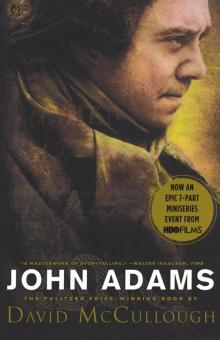 John Adams
John Adams The Greater Journey: Americans in Paris
The Greater Journey: Americans in Paris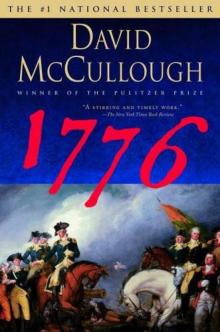 1776
1776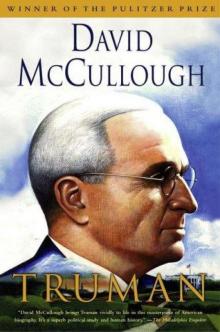 Truman
Truman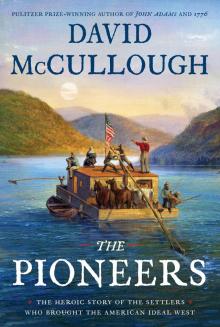 The Pioneers
The Pioneers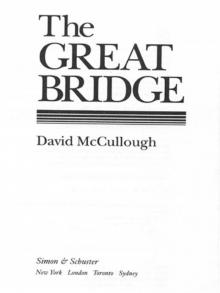 The Great Bridge: The Epic Story of the Building of the Brooklyn Bridge
The Great Bridge: The Epic Story of the Building of the Brooklyn Bridge The American Spirit
The American Spirit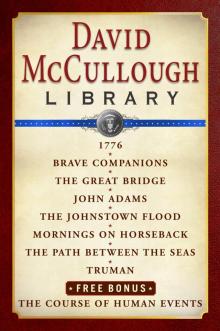 David McCullough Library E-book Box Set
David McCullough Library E-book Box Set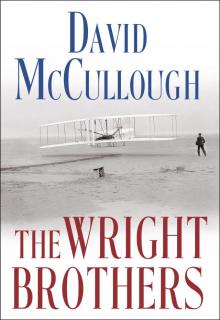 The Wright Brothers
The Wright Brothers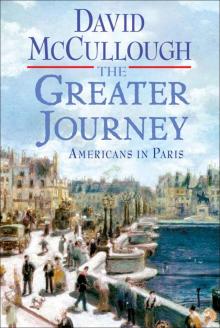 The Greater Journey
The Greater Journey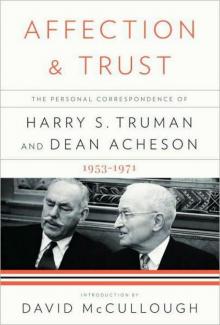 Affection and Trust: The Personal Correspondence of Harry S. Truman and Dean Acheson, 1953-1971
Affection and Trust: The Personal Correspondence of Harry S. Truman and Dean Acheson, 1953-1971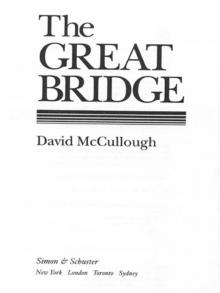 The Great Bridge
The Great Bridge